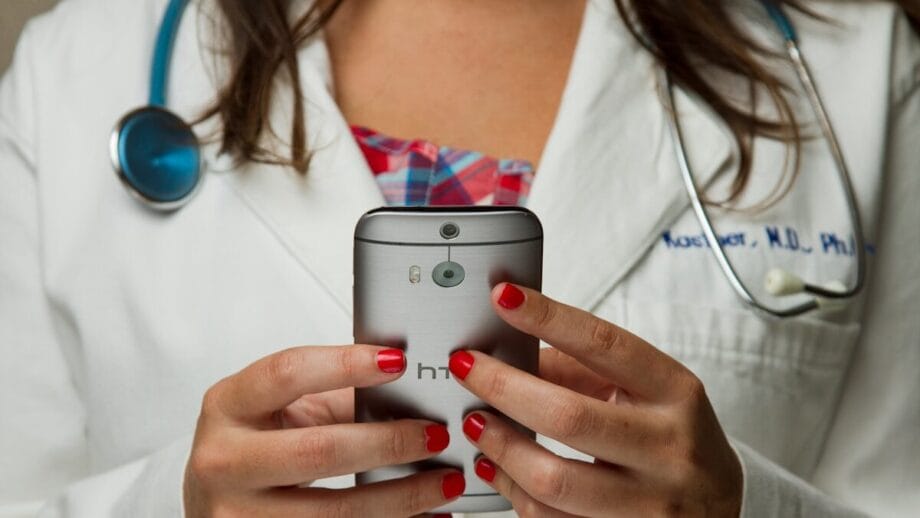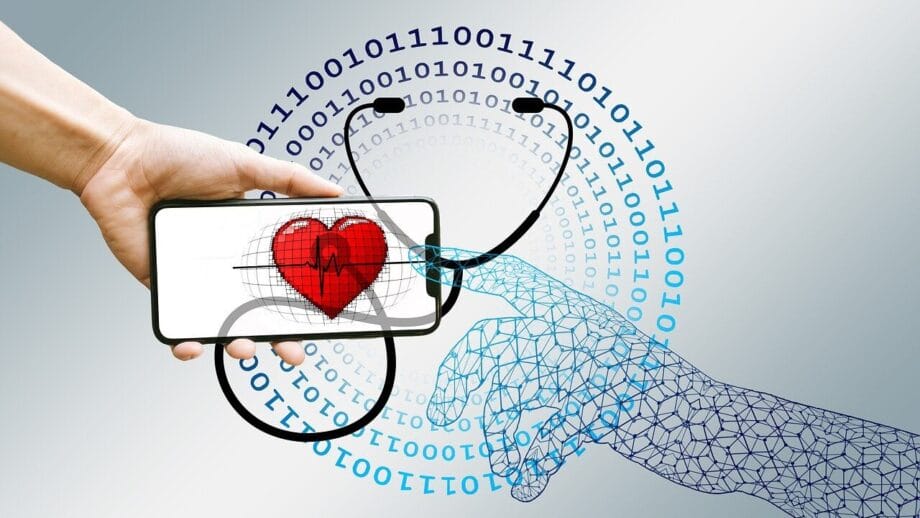In the ever-evolving landscape of modern healthcare, technology continues to shape how medical professionals work, diagnose, and treat patients. Among the latest innovations, Generative AI has emerged as a powerful force reshaping one of the most time-consuming yet critical aspects of clinical care: medical documentation.
From voice-powered note-taking to real-time transcription and summarization, AI medical scribes are leading this transformation. In this article, we’ll explore how generative AI is streamlining documentation workflows in healthcare, reducing physician burnout, and improving overall care quality.
What is an AI Medical Scribe?

An AI medical scribe is a generative AI-powered tool designed to assist healthcare professionals by capturing, interpreting, and transcribing clinical conversations into structured medical documentation. Rather than relying on manual note-taking or dictation, an AI scribe listens passively during patient interactions, whether in-person or via telehealth, and creates real-time summaries, SOAP notes, and electronic health record (EHR) entries.
What makes AI scribes particularly valuable is their ability to understand medical terminology, adapt to different clinical workflows, and operate with high contextual awareness. Unlike traditional speech-to-text systems, they are built using large language models (LLMs) trained on vast medical datasets, enabling them to recognize complex phrasing, differentiate between speakers, and generate documentation that meets both clinical and regulatory standards.
These tools are increasingly integrated into modern digital healthcare environments, helping physicians and nurses reduce administrative burdens while increasing documentation speed and accuracy.
Is Generative AI Safe to Use in Healthcare?
Yes, generative AI can be safe for healthcare use when implemented with proper security protocols and ethical oversight. Safety in this context primarily refers to data privacy, compliance, and the integrity of the AI’s output.
Leading AI medical scribe solutions are designed in alignment with stringent data protection laws, such as the Health Insurance Portability and Accountability Act (HIPAA) in the United States and the General Data Protection Regulation (GDPR) in Europe. These systems use encrypted communication, secure cloud storage, and role-based access controls to ensure that patient information is handled responsibly.
Moreover, generative AI platforms typically do not operate autonomously. Healthcare professionals are always responsible for reviewing, editing, and approving any AI-generated content before it becomes part of the patient’s official medical record. This built-in human oversight is essential for maintaining both safety and accountability.
While no technology is without risk, when deployed responsibly, generative AI enhances data accuracy, reduces manual entry errors, and ultimately contributes to safer, more efficient clinical environments.
Will AI Replace Human Scribes or Doctors?
The short answer is no, AI is designed to assist, not replace, human medical professionals.
AI medical scribes are built to take over repetitive and time-consuming administrative tasks, such as transcribing notes or updating EHRs. However, they do not possess the empathy, clinical judgment, or decision-making capabilities that doctors, nurses, and medical scribes bring to patient care.
Rather than eliminating jobs, generative AI is reshaping roles, allowing human professionals to focus more on tasks that require critical thinking, interpersonal connection, and real-time decision-making. In fact, in many healthcare settings, AI scribes work alongside human scribes or support staff, helping them become more efficient and accurate in their roles.
For doctors, this shift means less screen time and more time spent interacting with patients. For healthcare systems, it means better workflow optimization without compromising the human touch that defines quality care.
Generative AI is a powerful tool one but it functions best when guided by skilled professionals who understand its strengths, limitations, and ethical considerations.
What is Generative AI and Why Does It Matter in Healthcare?
Generative AI refers to a class of artificial intelligence technologies designed to generate content, such as text, images, audio, or even code, by learning from large datasets. Unlike traditional rule-based systems, generative AI uses advanced machine learning models (such as GPT or other LLMs) that can interpret context, understand language, and create human-like content.
In healthcare, this technology matters because documentation isn’t just paperwork; it’s central to diagnosis, legal compliance, treatment planning, and billing. Doctors spend hours each day on patient notes, often sacrificing valuable face-to-face time with patients. This is where generative AI comes into play.

The Rise of AI Medical Scribes
An AI medical scribe is a digital assistant powered by generative AI that listens to doctor-patient conversations, processes the information in real time, and automatically drafts medical notes or updates electronic health records (EHRs).
These AI scribes are not just glorified dictation tools. They:
- Understand medical terminology
- Follow complex narratives
- Identify structured data
- Summarize relevant information
Some notable examples include companies like HeidiHealth, Augmedix, and Nabla, all offering AI-powered medical scribing platforms that integrate seamlessly with existing EHR systems. These tools are designed to free clinicians from screens, allowing them to focus more on the human side of care.
Key Benefits of Using Generative AI in Medical Documentation
- Time Efficiency: Doctors spend up to 2 hours on documentation for every hour of patient care. AI scribes drastically reduce this time by instantly capturing and formatting data.
- Improved Accuracy: AI-generated notes reduce transcription errors and typos, improving the quality of patient records. These systems often learn from clinician feedback to refine their accuracy over time.
- Enhanced Patient Engagement: When doctors aren’t glued to screens, they’re better able to make eye contact, listen actively, and build rapport. Patients notice the difference.
- Reduced Burnout: Clerical overload is a significant contributor to physician burnout. By handling tedious tasks, AI allows doctors to reclaim time for themselves and their families.
- Faster Billing and Reimbursement: Accurate and timely notes streamline the billing cycle, leading to faster insurance claims and fewer denied requests.
Use Cases and Success Stories
A mid-sized clinic in California reported a 30% reduction in documentation time after deploying an AI scribe across its primary care team. Physicians noted a better work-life balance, and patient satisfaction scores improved.
Another example is a rural hospital in India that uses generative AI-powered mobile tools to transcribe multilingual patient consultations, enabling non-specialist providers to communicate with specialists remotely.
Even large institutions like Mayo Clinic and Mount Sinai are experimenting with generative AI systems for pre-charting and post-visit summaries, acknowledging that this technology isn’t just for startups but scalable across global healthcare systems.
Digital Workflows in Modern Healthcare
Digital workflows refer to the systematic flow of tasks, data, and documentation through digital tools, replacing traditional manual methods.
In healthcare, this includes:
- Electronic Health Records (EHRs)
- Telemedicine platforms
- Digital prescribing and lab ordering
- Remote patient monitoring tools
Generative AI fits seamlessly into these workflows by bridging the gap between unstructured conversations and structured digital documentation. Whether embedded in telehealth platforms or integrated directly into mobile apps, these tools act as connective tissue between clinical interactions and back-end systems.
Challenges and Ethical Considerations
While promising, the use of generative AI in healthcare must navigate several hurdles:
- Data Privacy and Compliance: Healthcare data is highly sensitive. AI scribes must comply with standards like HIPAA in the U.S. or GDPR in Europe. Encryption, audit trails, and access controls are essential.
- Model Bias and Accuracy: AI can misinterpret accents, dialects, or unique phrasing, potentially introducing bias or errors. Human oversight remains crucial, especially for final diagnoses or treatment plans.
- Technological Accessibility: Not all clinics, especially in rural or underfunded areas, have the infrastructure to support real-time AI tools. Internet bandwidth, hardware requirements, and training are barriers to adoption.
- Job Displacement Concerns: While AI scribes are designed to support, not replace, human roles, there’s concern among traditional transcriptionists about job security. Reskilling and integration strategies are needed.

The Future of Generative AI in Healthcare
The capabilities of generative AI are expanding rapidly. Future iterations of AI medical scribes could include:
- Multilingual translation on the fly
- Predictive diagnosis suggestions (with human review)
- Patient education summaries generated in real time
- Voice-enabled EHR navigation
- Customizable tone and style options for different specialties
Moreover, as AI systems become more explainable and interpretable, regulatory acceptance will grow, leading to wider adoption in both urban and rural health systems.
Empowering Healthcare with Generative AI
Generative AI is not just a buzzword; it’s a practical, powerful tool reshaping how healthcare professionals approach documentation. By automating routine tasks, enhancing accuracy, and improving patient interaction, AI medical scribes are playing a key role in building a more efficient and compassionate healthcare system.
While challenges remain, the direction is clear: Generative AI is not replacing human clinicians; it’s empowering them.
Healthcare leaders, IT professionals, and medical staff must now collaborate to integrate these tools responsibly, ensuring they serve both clinicians and patients alike.






